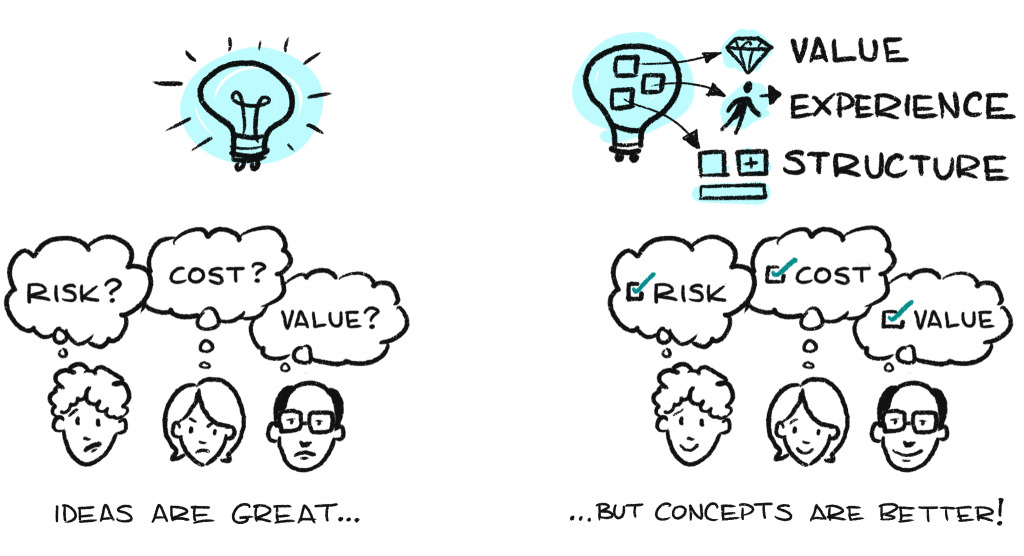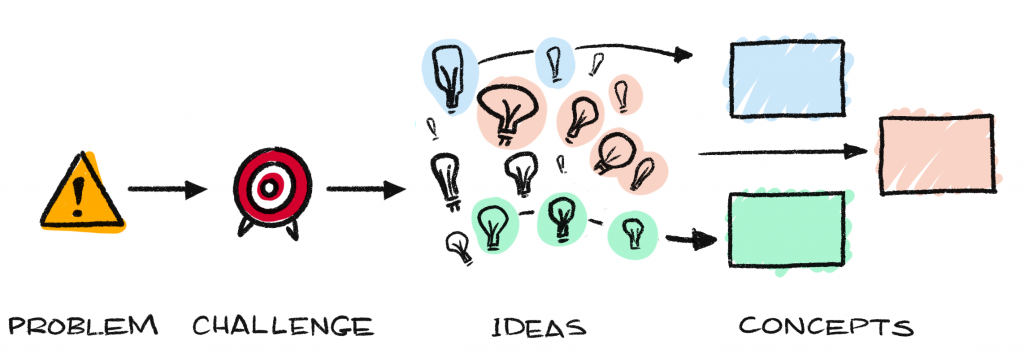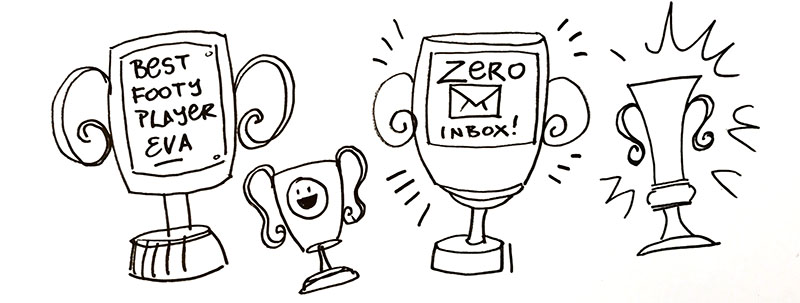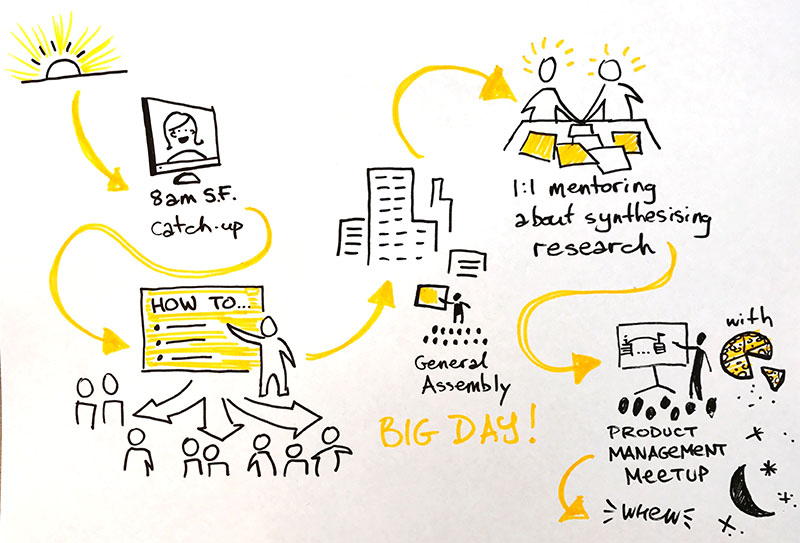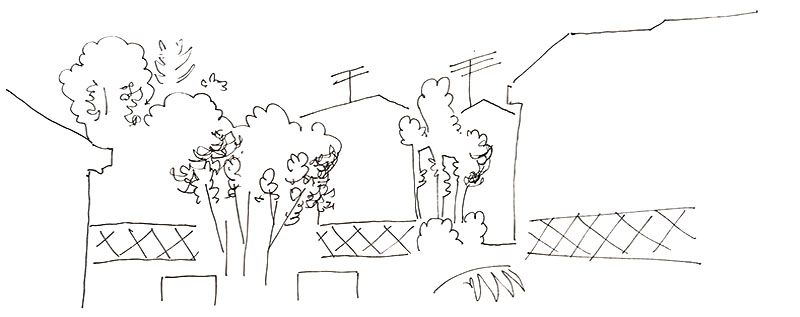If you want to find ways to draw topics more creatively, or you feel like you’re in a bit of a rut drawing things the same way all the time, then the FLARE prompts are for you.
How do you draw a person? Or a building? Or a tree? There are lots of ways to draw real-world objects, and we can use curiosity, observation and practice to draw these in satisfying ways.

Some simple images of simple real-world objects
But how do you draw more complex and abstract concepts, like ‘innovation’, ‘strategy’, or ‘diversity’? It’s much harder, isn’t it?
A couple of years ago, Axelle Vanquaillie (a masterful visual practitioner, facilitator and leadership coach, and owner of the company Visual Harvesting) and I were discussing how to help people in our training workshops with this common challenge: how do you illustrate abstract concepts in more creative ways? We realised that many of us anchor on to one idea, and find it hard to go beyond that. My design background has always taught me that it’s always better to use divergent thinking, and that the way to have one great idea is to have 100 so-so ideas first.
With that in mind, we pooled our knowledge, sketched a lot, and swapped stories of various training sessions we had run and examples we’d come up against. And that’s how FLARE was born.
We’ve since used FLARE with a variety of different groups in training sessions, with a variety of levels of confidence in drawing, and it has always helped everyone be more creative and get more satisfying results from their drawing. And now it’s your turn to learn!
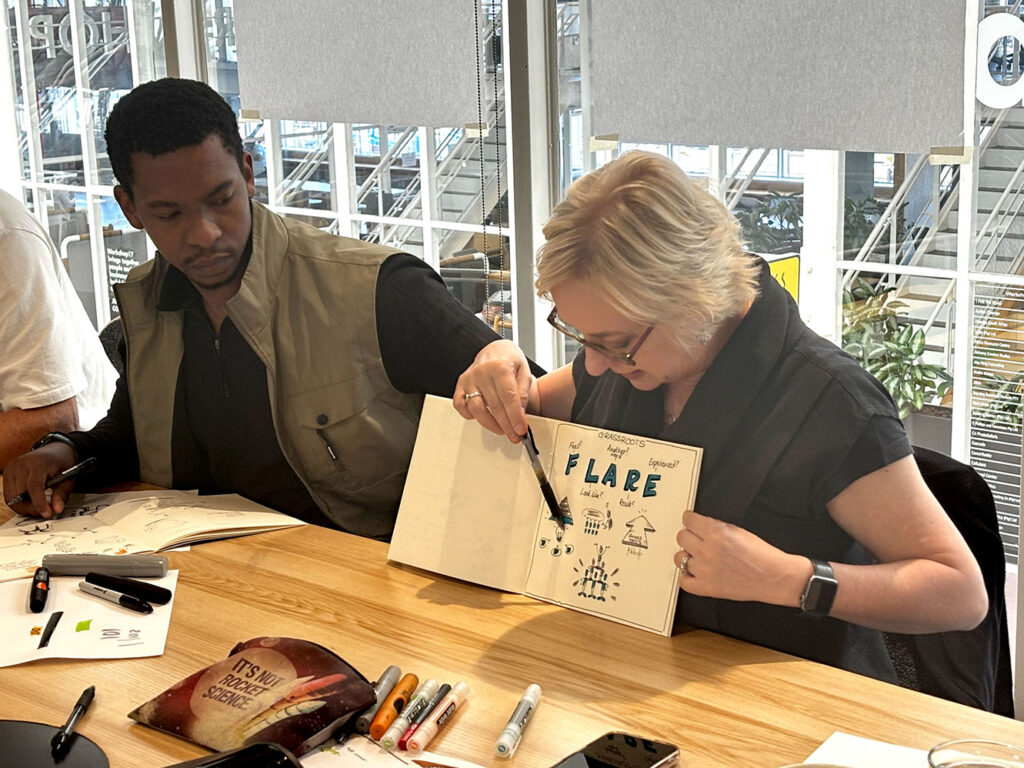
A participant in one of our training sessions reflecting on the experience of using FLARE to illustrate a tricky concept
What is FLARE?
FLARE is a set of prompts you can use to help you move beyond the way you’re used to thinking about a topic you want to draw, and think about it in new ways. What you get is a much greater range of ideas that you can then refine and combine into one final image.

The FLARE process gets you more initial ideas from which to create your final visual
FLARE stands for:
- Feel – What does it feel like? What emotions does this trigger?
- Look – What does it look like? What are the real-world objects at play?
- Another word – What’s another word (or words) to describe this?
- Result – What is the result of this? What is the end-game of this topic or scenario? Is there a benefit realised? Or a negative impact that might happen?
- Experience – What is the experience of this? Is it something where there are several steps involved? Or several devices, places, people or roles involved?
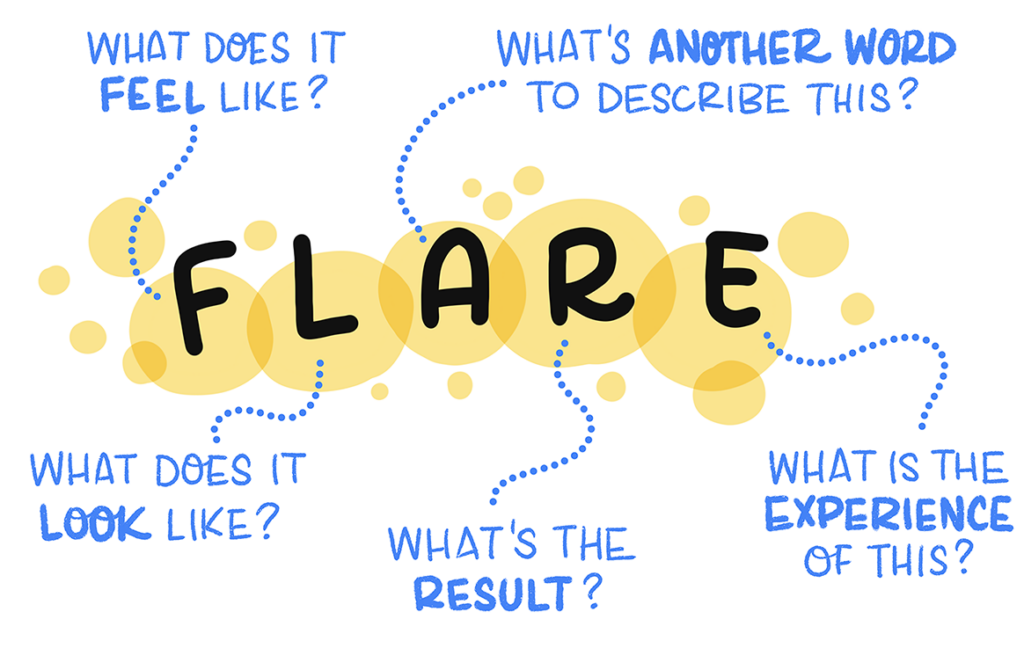
How to use FLARE
It’s really important to understand that when you use FLARE, you don’t try to come up with The Perfect Image first. What we’re doing here is generating lots of different ideas first, to help us explore the topic in better ways, and then we go back and refine and combine our best ideas.
1. Write your topic in the middle of a big page
Start with a topic – especially a complex or abstract topic – you have in mind to draw. It’s best if it doesn’t include any clichés or existing visual metaphors. If it does, try to restate it in a clearer way. Then, write it down in the middle of a big blank page.
Now, write the letters of FLARE around it. We’re going to make a mindmap. You can also do this as a grid if you like; the main thing is to give yourself plenty of space to write first, and then draw your ideas.
In this example, I’m going to go with “Teams struggle to understand each other”…
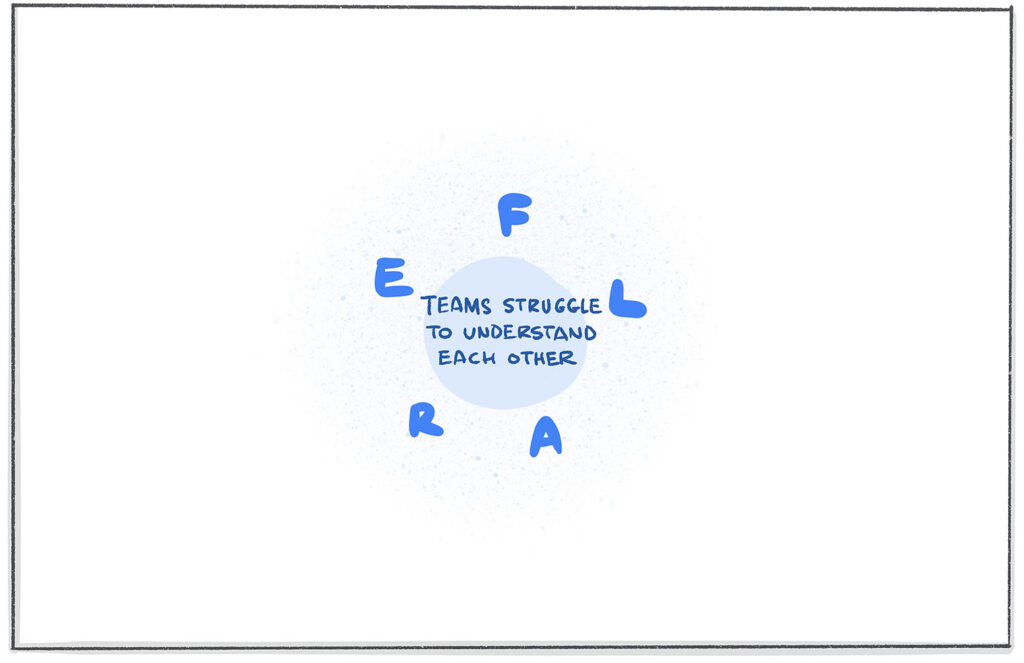
2. Ask yourself the first FLARE prompt and draw your ideas
The first FLARE prompt is F: “What does it feel like?” Too often, concepts are – well – too conceptual, and it’s easy to forget that whatever the concept is, it probably affects people in ways that might actually be relevant to capture. Jot down some words that describe how your topic feels.

3. Jot down ideas for the other four prompts
Repeat step 2, and write down any ideas you come up with for the other four prompts. Allow each prompt to help you think about the topic in new ways, from new perspectives. You should have a set of descriptions around your original topic.
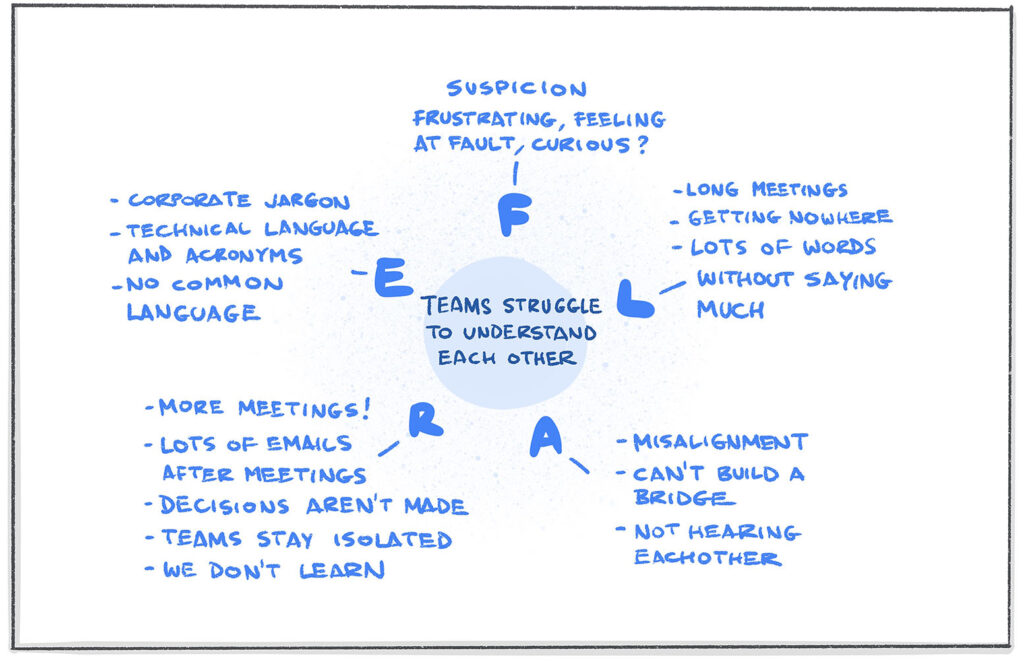
Don’t worry if you can’t think of several things for each of the five prompts. Some prompts won’t suit the topic as well as others. If you get stuck, just move on.
4. Draw lots of different ideas based on what you wrote
Now we get drawing! Go back over everything you wrote, and do some quick sketches to capture what you wrote. Remember, this isn’t about trying to draw the One Perfect Image now, or even to draw the entire topic or concept in one go; this is still just brainstorming.
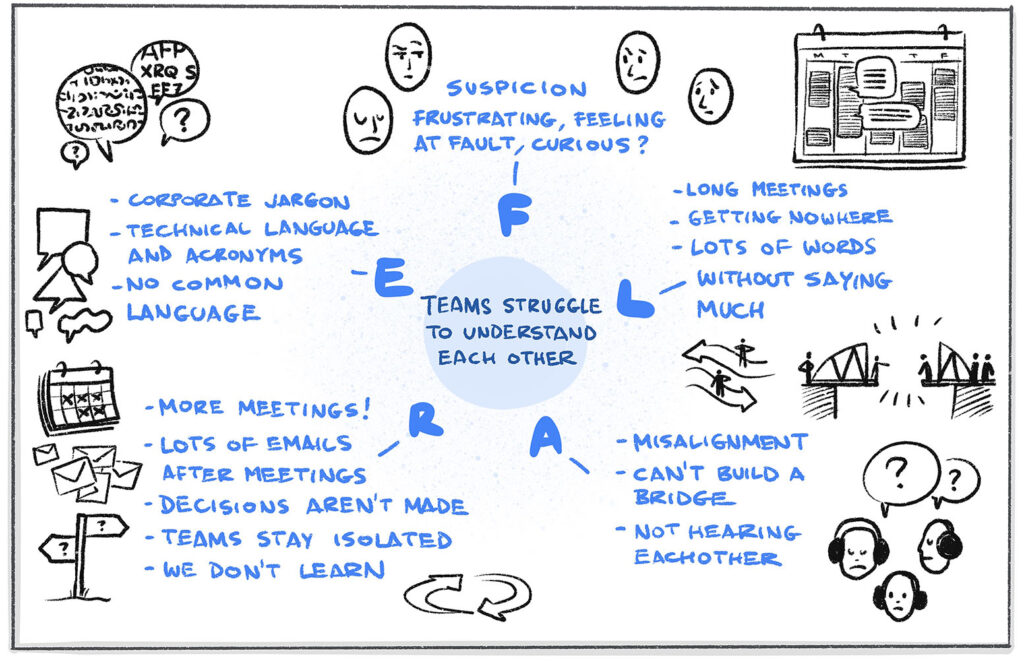
As I sketched various ideas based on what I’d written for this example, I made sure not to self-edit as I went. The more rough sketches, the better.
5. Refine and combine
Now comes my favourite part! This is where you channel your inner editor, look over all your various sketches from across the prompts, and choose the ones you think are most relevant, most compelling, and/or most insightful. There might be one that just nails it on its own, but typically there are a few.
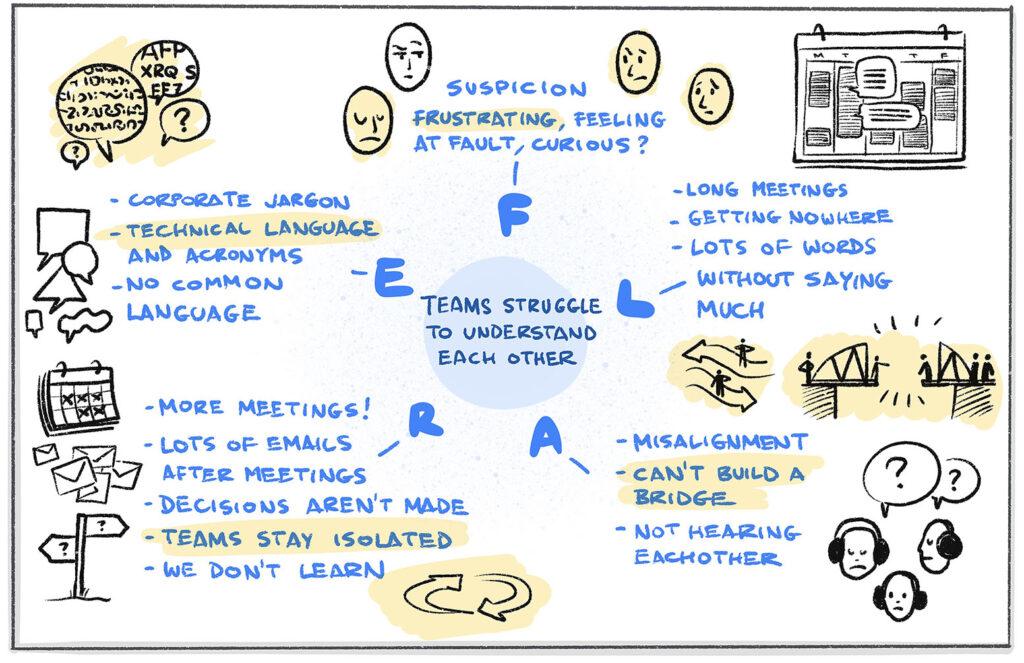
As I went back over what I’d written and sketched in this example, the bridge idea really resonated with me, as well as showing several different languages. The going-around-in-circles also appealed to me.
Now, draw something that unites those several good ideas into one single cohesive picture.
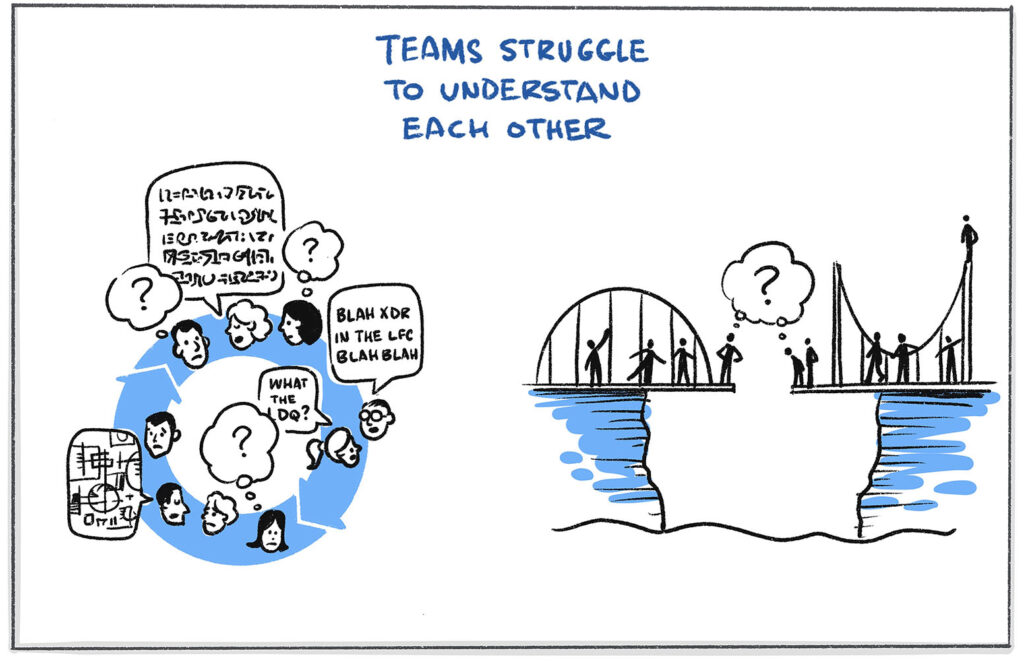
As you can see here, I landed on two different ideas. The first idea to illustrate the topic of “Teams struggle to understand each other” uses speech balloons and thought balloons… No surprises there, but positioning them on a roundabout double arrow added some more meaning. As I thought about my second idea with the bridges, it occurred to me that it could look interesting if either ‘side’ basically built their own different bridge, and even though both bridges are complete, they never meet in the middle. This speaks to the inward-looking nature that some teams have when they struggle to communicate with one another.
Which one do you prefer? What do you think you would draw for this topic?
Some tips to help
Here are a few other things to consider about the FLARE method
- Trust the process! Too often we’re hard-wired to try to draw just one image that works the first time. Embrace the fact that it’s better to create and explore many options first, and then you’ll have more to choose from. And who knows, you might have some a-Ha moments about the concept itself you’re trying to draw along the way, as well as how to draw it.
- Not all prompts have to be present in the final image. Try not to force an image that includes something that speaks to every prompt. It’s totally fine if your final image ends up just being about how your topic feels. It’s also fine if you land on an image that combines feel with look and result.
- Feel free to skip step 3 if you like, and jump straight to drawing your answers to each prompt. I put this step in to help you if you’re more comfortable with writing as well as drawing.
- Not all prompts will make sense all the time and that’s okay. They’re just prompts; if you’re stuck on a prompt because it doesn’t seem to work for your topic or context, just move on.
Taking FLARE further
I encourage you to give FLARE a go the next time you need to illustrate a tricky topic, or if you want to try illustrating a familiar topic in a more creative way. The FLARE prompts help you think deeper about the topic, and maybe help you to clarify your point of view, too.
With that in mind, there are other ways you can use the FLARE prompts.
- Group drawing – FLARE is fun in pairs! Two heads are better than one, as they say, and if you try these prompts with someone else, you’ll both benefit from each other’s different experiences and points of view.
- Facilitation questions – If you run any meetings at work, you probably know that great facilitation is often about asking great questions, to help your group have a better conversation. The FLARE prompts might give you ideas about how to enrich your next conversation, by helping everyone think about their topic in different ways.
- Problem solving – As Charles Kettering is said to have said, “A problem well stated is half solved”. So often, a great solution lies in the way a problem is articulated in the first place. Using the FLARE prompts can help you and your team approach any problem or challenge from a different point of view, to perhaps reveal a hidden solution.
Feel free to drop me a line and let me know if this helps your drawing. 🙂

